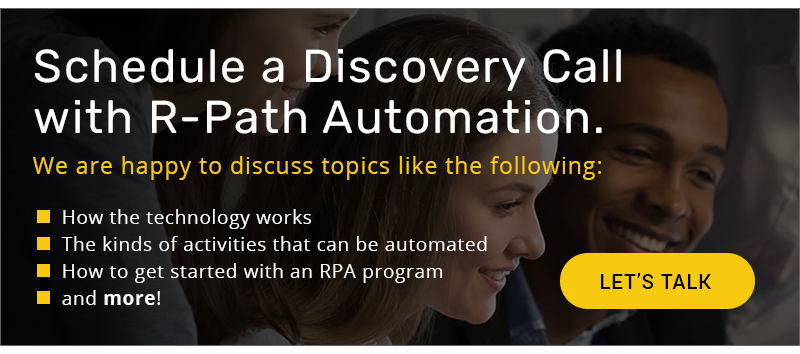Even in an increasingly digital world, most organizations can readily point to a painful or expensive form-based process that eats up company resources. Some examples include:
- Using paper forms to collect important information like medical history a patient provides before a doctor visit.
- Populating a paper or digital form to transfer information from one party to another such as a bill of lading or an invoice.
- Filling out case-specific forms like a check or prescription slip to trigger an action.
Once received, processing forms like these can be expensive in terms of time, energy, and ensuring quality. It can also be a drain on employees as they’re asked to complete the same tasks over and over. Recognizing these challenges, forward-thinking business leaders often seek out automation solutions to help.
Instinctively, an organization may turn to OCR (Optical Character Recognition) technology as a solution to their process woes. The idea is relatively simple: if a computer can scan and read forms faster than a human, the organization will save time, energy, and money and reduce common errors.
While OCR is an attractive way to optimize a task within a larger business process, organizations seeking automation should view the potential optimization through a wider lens involving the entire process – not just a single task. OCR may only represent a single step in an ideal automation solution.
Implementation Involves More than OCR Technology
To illustrate, imagine a scenario where a company called Widget, Inc. is looking to speed up its processing of invoice statements. This is a great place to begin. The organization has identified an area of the company that needs improvement and is eyeing OCR as a potential solution.
Widget determines that OCR is a great option for quickly processing a high volume of invoice statements from some of its larger customers. The forms are similar and have low variability. OCR should reduce the time it takes to scan through these documents, so it initially seems to make sense.
An operations leader realizes, however, that OCR technology alone doesn’t account for the people who must manage the invoice statements that OCR doesn’t quite handle. Before jumping straight into the OCR implementation, leadership decides to evaluate how the invoice process affects the entire organization.
Evaluate the Whole Process Before Automation Begins
Widget reviews their invoice statement process from start to finish to ensure they’re implementing a comprehensive solution that speeds up the whole cycle, saving both time and money. They evaluate each step in the process, finding it helpful to segment different types of invoices and the frequency at which they are received.
Their due diligence confirms that a large portion of the company’s invoices are ideal candidates for OCR to assist. These invoices are often the same each month and are received in sufficient volume. Using OCR technology, invoice PDFs can be scanned to identify the account number, client name, and other needed details.
Instead of stopping there as originally thought, Widget recognizes the opportunity to add a digital worker. The “bot” is programmed to match the account number on the invoice to the accounting system, report on any errors, and move the invoice to the next step in the process.
Widget also finds that a portion of their forms do not work well with OCR technology. These forms are highly variable and are often received with hard-to-read handwriting and critical exceptions. Thanks to the addition of the digital worker, these variable invoice statements can be automatically routed to a member of the team for human-directed processing.
Once Widget implements the new, end-to-end process, the department lead can focus their attention on addressing exceptions and serving their team. Tasks within the invoicing cycle have now been optimized to benefit Widget’s employees who are now primed to look for other opportunities to optimize their workflow.
| Where OCR Works Well | Where OCR May Need Human Help |
|
|
Reimagine Automation with a Human in the Loop
Taking the time to reimagine the way employees may interact with a process prior to implementing intelligent automation can result in higher employee engagement in addition to the realized time and cost savings. Employees will be freed up to spend time on work they’re more likely to enjoy and not bogged down in repetitive form processing.
An added benefit is that this leads each person in the organization to think about their own departmental processes holistically and how they fit within the company. When employees feel included in the process, they’re more likely to trust it and take the new way of doing things to heart. In this way, organizational change management is just as important as the automation implementation itself.
This consideration, also implemented by our example company above, is known as having a “human in the loop”. Digital workers are introduced to what they do best (i.e., review data quickly and error-free with programmed constraints), and humans are left to do what they do better than digital workers (i.e., more sprawling analysis with variable decision making).
The combination of digital workers and humans working in harmony can reduce the many pain points of a form-based process. By guiding your organization through its automation journey by considering entire processes from start to finish, the results will improve the likelihood of long-term success of your automation program – no matter how large or small it may seem.


